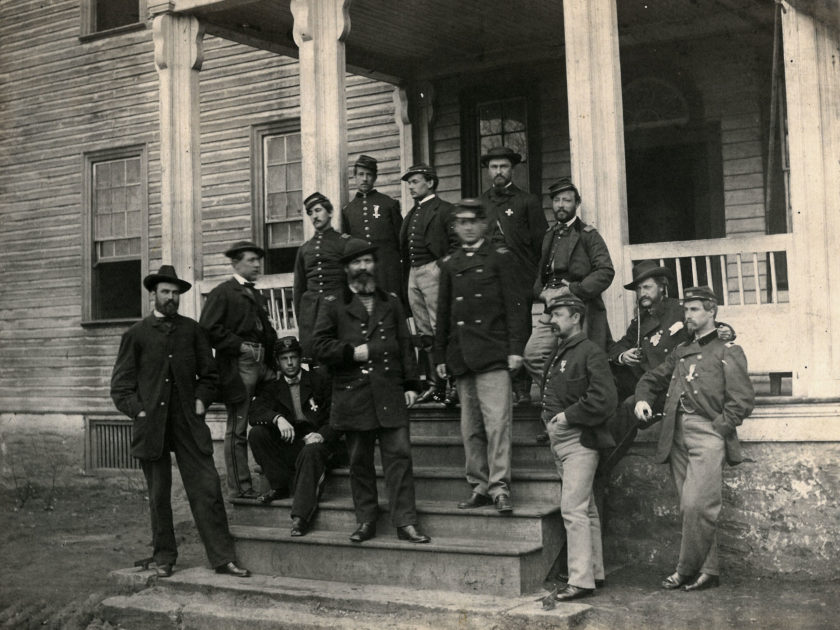By Michael J. McAfee
Napoleon purportedly commented that an army travels on its stomach. If that was the case, the commissary officers keep it moving. Likewise, ordnance officers maintain the flow of weapons and ammunition, and inspectors make certain the men and their equipment are up to snuff and ready for action.
The vital work of officers of both the General Staff and regimental staffs is often overlooked by the average Civil War buff, enamored by the blood and glory of battles.
Although staff officers may seem to only carry orders and keep the books in order and the paperwork flowing, no war can be fought without these individuals. During Civil War battles, the lowly lieutenants acted as adjutants, and rode through the battlefields delivering orders and commands. So, while the parts they played in the Civil War may not seem especially heroic, they were indeed vital. One notable exception however, is Maj. Gen. Gouverneur K. Warren, who, in his role as a staff officer, determined the vulnerability of Little Round Top at Gettysburg and brought up troops on his own authority to successfully defend it. Union staff dressed in distinctive uniforms. They typically attached an insignia, composed of a wreath with the letters U.S. in the center, on their headgear. Their shoulder straps included a field of black in place of the standard branch colors. Following the style of general officers, they wore dark blue trousers with gilt cord on the outer seams. The accompanying portraits illustrate a variety of typical staff officer uniforms.
Career staffer
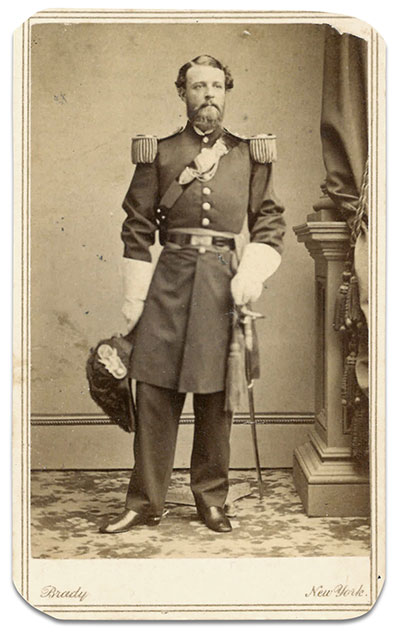
Louis Johnson Lambert was staff officer for his entire career, serving with the U.S. Volunteers Adjutant General Department. He enlisted as a captain, as pictured here, and ended the war as a brevet lieutenant colonel. He wears the full dress of a staff officer, including chapeau and staff officer’s belt and cartridge box over his shoulder.
2nd Corps loyalty
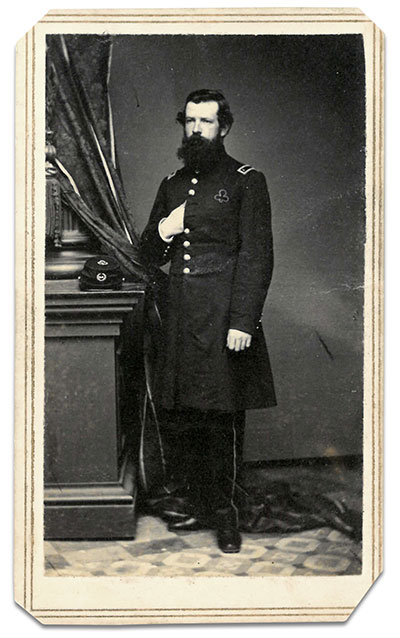
Charles J. Clarke served with the 88th New York Infantry until he suffered a wound at the Battle of Fredericksburg in 1862. He re-enlisted in 1864 with the 69th New York as a first lieutenant and served on the regimental staff. His uniform and insignia are appropriate for a staff officer, though he sports Second Corps badges on his cap and uniform coat.
Short time staff officer

William Bullymore enlisted in the 49th New York Infantry in August of 1861, and joined the regimental staff a month later. His boots, jacket and saber suggest he was a cavalry officer. But his cap insignia and shoulder straps are infantry. He died of disease in May 1862.
Possible regimental staff officer
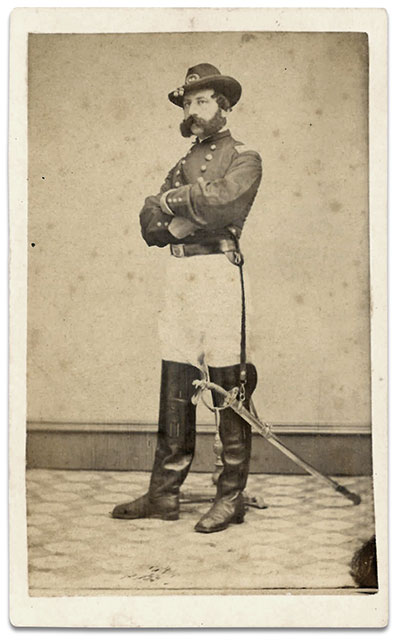
The double-breasted jacket and slouch hat with U.S. insignia worn by unidentified officer befits a staff officer. His shoulder straps however, do not appear to have black fields. Therefore, he may be a regimental officer without his branch insignia. He also wears what may be white trousers.
Aide to Maj. Gen. Wool
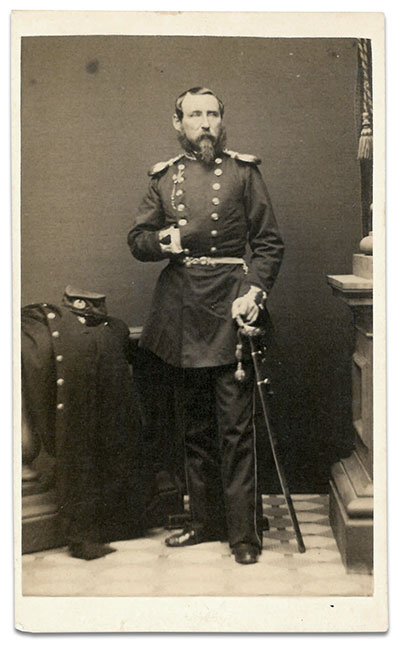
Ernest von Vegesack was a Swedish army officer who served in the Union army, first as an aide de camp to Maj. Gen. John E. Wool, and later on the staff of Maj. Gen. George B. McClellan. Vegesack was later commissioned colonel of the 20th New York Volunteer Infantry. He received the Medal of Honor for his actions at the Battle of Gaines Mill in June of 1862 while a staff officer. He is pictured here in his Swedish army uniform.
On Maj. Gen. Meade’s staff

Emanoil Boteanu was a Romanian Army officer serving on the staff of Maj. Gen. George G. Meade in 1865. He wears his national uniform with distinctive white cap.
MI Senior Editor Michael J. McAfee is a curator at the West Point Museum at the United States Military Academy, and author of numerous books. He has curated major museum exhibitions, and has contributed images and authoritative knowledge to other volumes and projects. The photographs reproduced here are from his collection.
SPREAD THE WORD: We encourage you to share this story on social media and elsewhere to educate and raise awareness. If you wish to use any image on this page for another purpose, please request permission.
LEARN MORE about Military Images, America’s only magazine dedicated to showcasing, interpreting and preserving Civil War portrait photography.
VISIT OUR STORE to subscribe, renew a subscription, and more.

